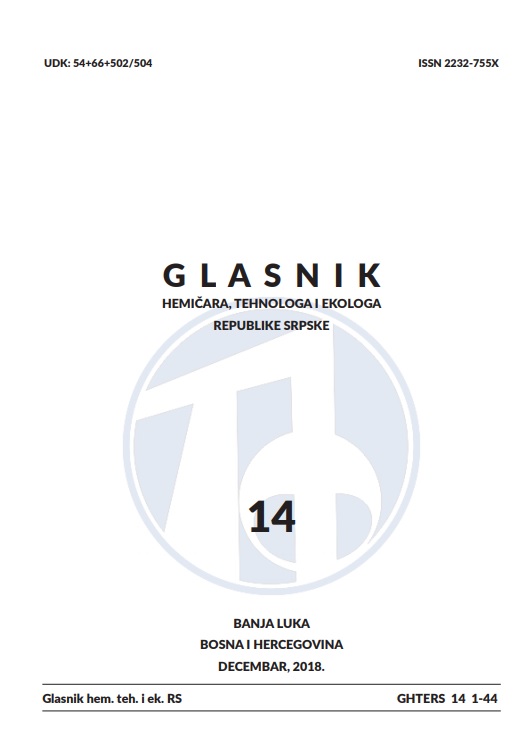Removal of organic pollutants from municipal wastewater by a horizontal pilot - scale constructed wetland utilizing Phragmites australis and Typha latifolia - Effectiveness monitoring per season
DOI:
https://doi.org/10.7251/GHTE1814039TAbstract
Constructed wetlands, as an alternative to conventional methods, are systems
designed on the basis of the application of natural purification processes that take place
in watery and swampy overgrown habitats, with certain microbiological groups. In the
wastewater treatment process various types of constructed wetlands can be combined
to achieve a higher efficiency of the purification.
In this study, the removal effectiveness of the organic substances from municipal
wastewater was monitored, using a horizontal pilot - scale constructed wetland
utilizing Typha latifolia and Phragmites australis. In addition to the measurement of
organic substances content through COD, BOD and KMnO4 consumption, and total
dissolved substances (TDS) in influent and effluent, microbiological sample analysis was
performed, monitored by total number of coliform bacteria.
The aim of this study was to calculate the effectiveness of removing organic
substances from municipal wastewater, depending on the season, as well as the
effectiveness of eliminating total coliform bacteria.
The results of one-year research have shown that the removal effectiveness of
the organic substances from municipal wastewater, expressed as the chemical oxygen
demand (COD), was the highest in summer - 87.82% ± 2.83%, and the lowest in the
winter - 64.51% ± 5.89%. During the study, effectiveness of elimination of total coliform
bacteria was 97.88 ± 0.80% and total dissolved substances 71.27% .
References
constructed wetland,
organic matter,
purification efficiency,
wetland plants.
